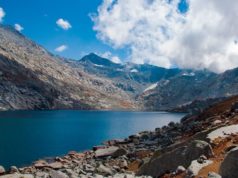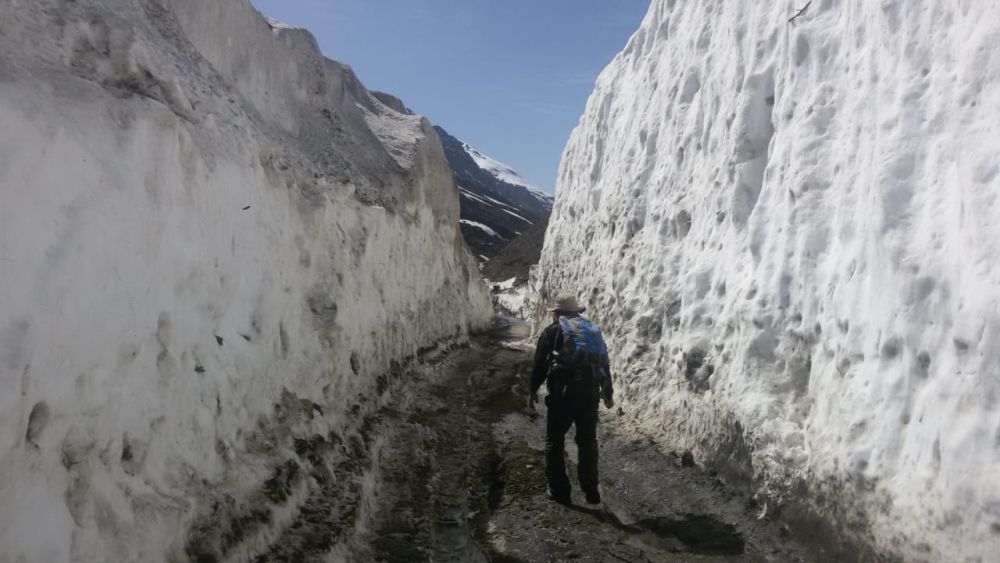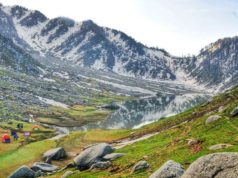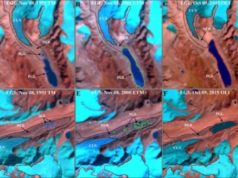Himachal Pradesh is facing a concerning environmental crisis as the impacts of global warming shrink snow cover and rapidly melt glaciers in its Himalayan region. Recent data from the Climate Change Centre of the Himachal Pradesh Council of Science, Technology, and Environment reveals that the snow cover in the lower Sutlej, Ravi, Beas, and Chenab river basins has shrunk by 10.02%. The Ravi basin has suffered the worst loss, with a 22.42% decline in snow cover. In addition to rising temperatures, forest fires, air pollution, and an influx of vehicles at tourist destinations are key contributors to this disturbing trend.
Snow Cover Shrinking Across the Himalayan Region
The effects of global warming are not only limited to Himachal Pradesh but extend across the broader Himalayan region, which acts as a critical water source for millions. A study conducted by the Indian Space Research Organisation (ISRO) in collaboration with the Geological Survey of India found that glaciers in the Himalayas are retreating at an unprecedented rate. Snow cover has receded significantly, particularly in the western Himalayas, and the rate of glacial loss is accelerating.
The shrinking snow cover threatens the delicate balance of ecosystems in the region. In Himachal Pradesh alone, satellite data shows the snow cover in the Sutlej basin dropped from 11,398.81 square kilometers in 2021-22 to 9,733.77 square kilometers in 2022-23. Similarly, the Ravi basin saw snow cover fall from 2,096.48 square kilometers to 1,626.46 square kilometers during the same period, marking the highest rate of loss. The Beas and Chenab basins also witnessed significant reductions. This overall decline indicates that the average area of snow-covered terrain across these river basins decreased by more than 2,300 square kilometers in just one year.
Formation of New Lakes Raises Concern
With glaciers melting at alarming rates, new glacial lakes are forming in the upper reaches of the Himalayas. In Himachal Pradesh, 321 new lakes were identified in the Sutlej basin alone between 2021 and 2022, bringing the total number of lakes in the region to 1,953. These lakes, often formed by glacial melt, pose a serious risk of glacial lake outburst floods (GLOFs). If these lakes breach, they could cause catastrophic downstream flooding, threatening both local communities and critical infrastructure.
Negative Impact on Water Resources and Livelihoods
The reduction in snow cover and glacial melt has severe consequences for water resources in the region. The Himalayas, often referred to as the “Water Tower of Asia,” feed major river systems, including the Ganges, Indus, and Brahmaputra, which support hundreds of millions of people across South Asia. With less snow accumulating yearly, the seasonal meltwater that sustains rivers during dry months is declining. This leads to reduced water availability for agriculture, hydropower generation, and drinking water supplies. The agricultural sector, which forms the backbone of many local economies, could face critical water shortages during peak growing seasons, threatening food security.
In Himachal Pradesh, which relies heavily on its rivers for hydropower, shrinking glaciers and reduced snowmelt could undermine electricity generation capacity, affecting both the state’s economy and energy supply for neighbouring regions.
Rising Temperatures and Increased Glacial Melt
Scientists have linked the shrinking snow cover and glacier retreat directly to rising temperatures caused by global warming. The main contributors to this warming include increased carbon emissions from forest fires, excessive vehicular traffic in tourist hotspots, and unchecked air pollution. The high influx of tourists in places like Shimla and Manali has strained local ecosystems, adding to air and noise pollution. According to JC Kuniyal, Senior Scientist at the GB Pant National Institute of Himalayan Environment and Sustainable Development, “Carbon produced in large quantities due to forest fires, combined with air pollution and excessive tourist vehicles, is one of the key drivers of glacier melting in the region.”
The retreating glaciers also increase the likelihood of flash floods and landslides, which are becoming more frequent in the region. Melting glaciers destabilize slopes and mountain terrain, increasing the risk of landslides that can destroy homes, roads, and infrastructure. As lakes formed by melting glaciers continue to expand, there is an escalating threat of GLOFs that could cause devastating flooding downstream.
Early Warning Systems to Mitigate Flood Risks
In response to these growing threats, early warning systems are being installed in the high-risk areas of Lahaul-Spiti, Kinnaur, and Kullu districts. Deputy Commissioners from these regions are coordinating efforts to mark locations where these systems can be deployed. A joint team of experts has already inspected sites in Lahaul-Spiti, with Ghepan Peak identified as a suitable location for an early warning system. Similar installations are planned for Sangla Dhar in Kinnaur and selected areas in Kullu.
These systems will provide timely alerts in the event of glacial lake breaches, helping communities downstream prepare for potential floods. However, the long-term solution lies in addressing the root causes of global warming and implementing more sustainable tourism and forest management practices to mitigate the impacts of climate change.
Dr. SS Randhawa, Chief Scientific Officer of the Himachal Pradesh Council of Science, Technology, and Environment, emphasized that while the newly formed lakes in the Sutlej basin do not pose an immediate threat, the increasing number of lakes is a stark reminder of the consequences of climate change. “We are witnessing the direct impacts of global warming on the Himalayas. If we do not take urgent action, the effects on water resources, agriculture, and local communities could be catastrophic,” he warned.
The situation in Himachal Pradesh reflects the broader crisis affecting the entire Himalayan region, and experts stress the need for coordinated national and international efforts to address global warming. Without significant reductions in greenhouse gas emissions and more sustainable management of natural resources, the future of the Himalayan ecosystem—and the livelihoods it supports—remains in peril.










